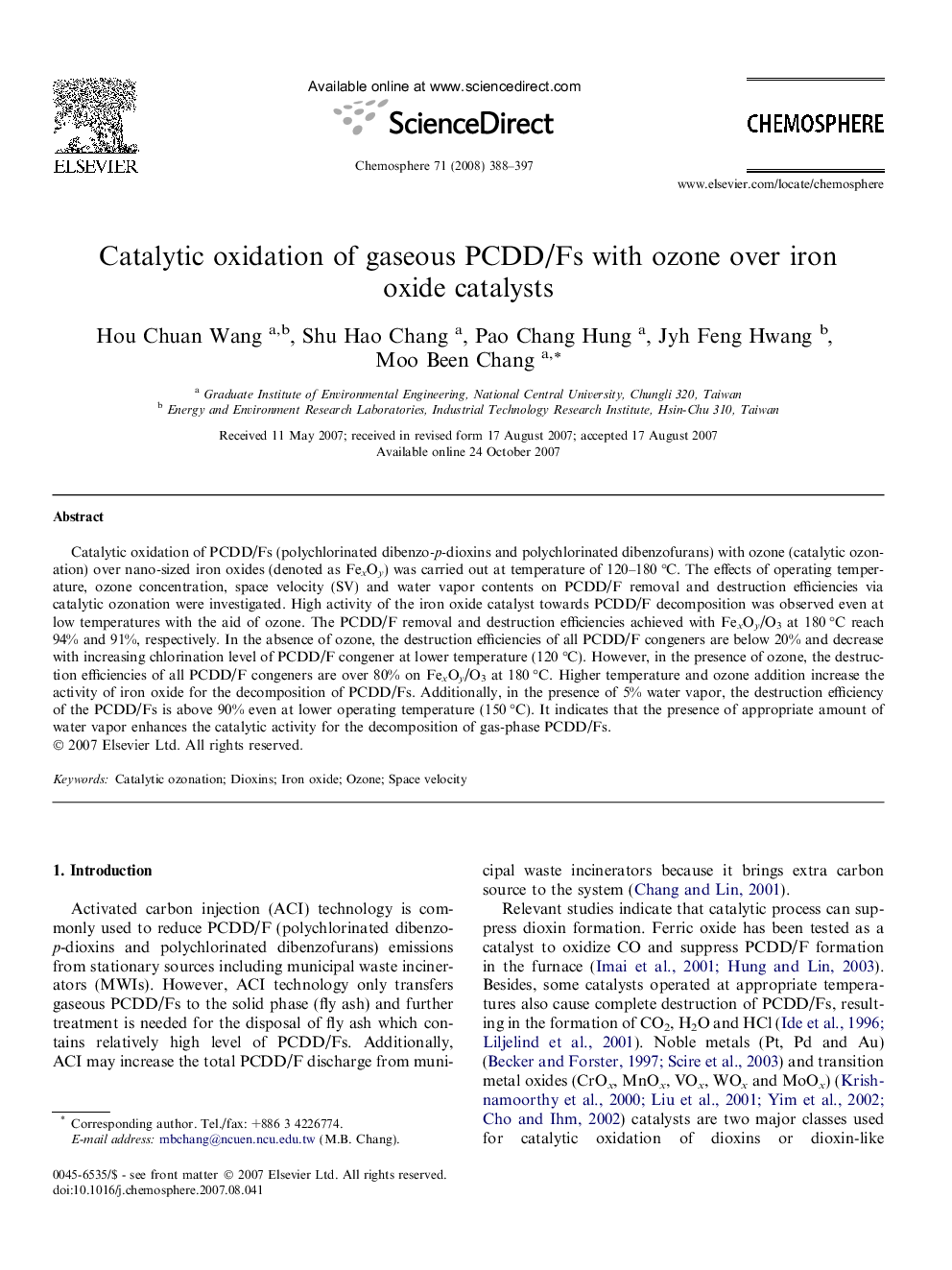| Article ID | Journal | Published Year | Pages | File Type |
|---|---|---|---|---|
| 4414411 | Chemosphere | 2008 | 10 Pages |
Catalytic oxidation of PCDD/Fs (polychlorinated dibenzo-p-dioxins and polychlorinated dibenzofurans) with ozone (catalytic ozonation) over nano-sized iron oxides (denoted as FexOy) was carried out at temperature of 120–180 °C. The effects of operating temperature, ozone concentration, space velocity (SV) and water vapor contents on PCDD/F removal and destruction efficiencies via catalytic ozonation were investigated. High activity of the iron oxide catalyst towards PCDD/F decomposition was observed even at low temperatures with the aid of ozone. The PCDD/F removal and destruction efficiencies achieved with FexOy/O3 at 180 °C reach 94% and 91%, respectively. In the absence of ozone, the destruction efficiencies of all PCDD/F congeners are below 20% and decrease with increasing chlorination level of PCDD/F congener at lower temperature (120 °C). However, in the presence of ozone, the destruction efficiencies of all PCDD/F congeners are over 80% on FexOy/O3 at 180 °C. Higher temperature and ozone addition increase the activity of iron oxide for the decomposition of PCDD/Fs. Additionally, in the presence of 5% water vapor, the destruction efficiency of the PCDD/Fs is above 90% even at lower operating temperature (150 °C). It indicates that the presence of appropriate amount of water vapor enhances the catalytic activity for the decomposition of gas-phase PCDD/Fs.
